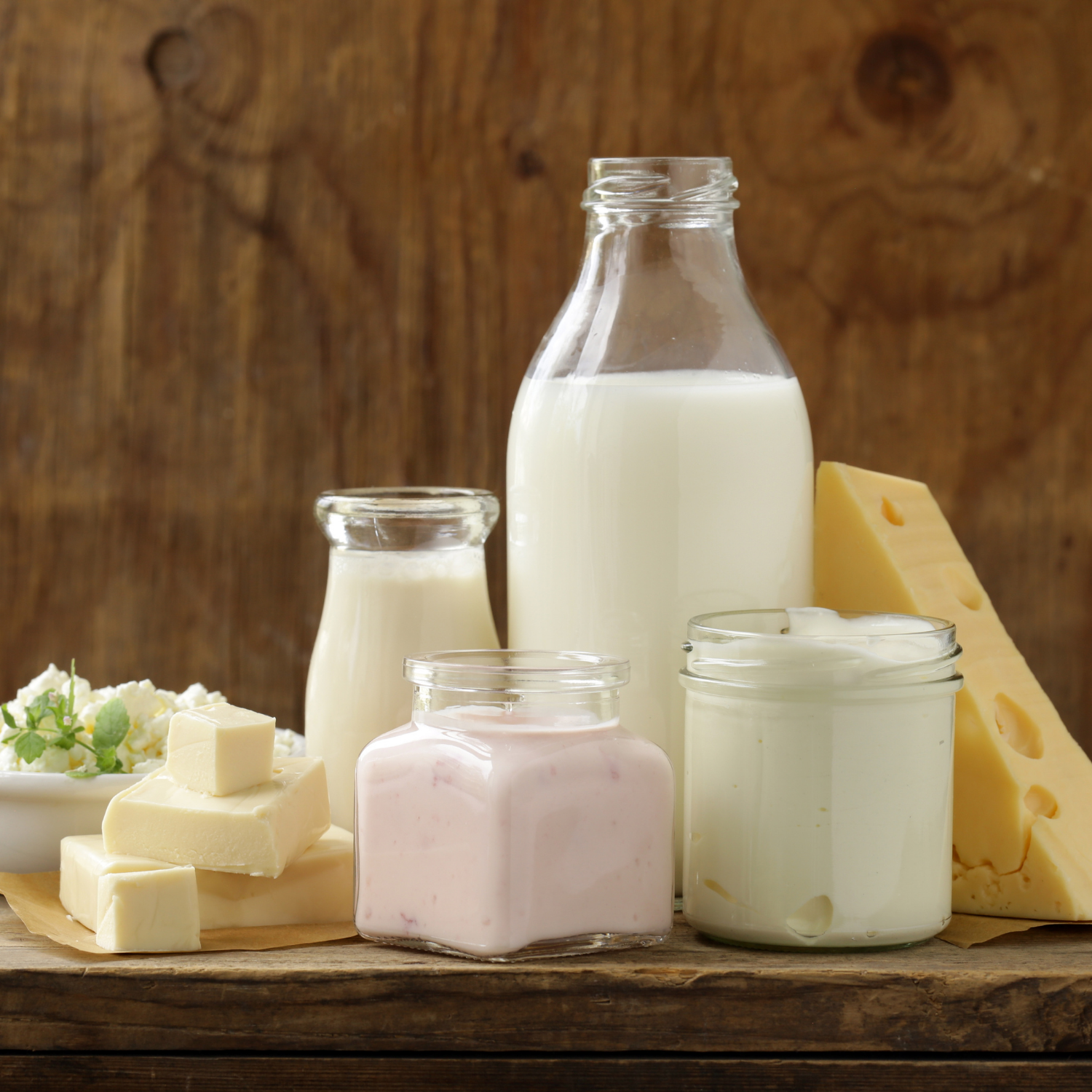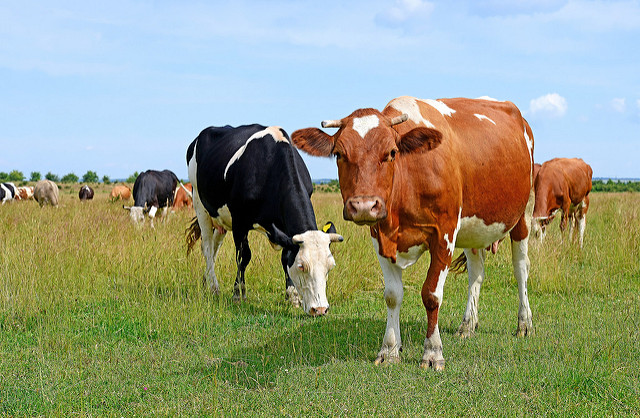



Weekly beef and dairy digest: meatpackers face investigation
Global food prices reach their highest level in more than six years and major meat companies face scrutiny for alleged worker safety violations.World food prices on the rise
Global food prices climbed 4.3 percent from December to January, marking both the eighth consecutive rise and also the highest monthly averages since July 2014, according to the Food and Agriculture Organisation of the United Nations’ (FAO) food price index. “The latest increase reflected strong gains in the sugar, cereals and vegetable oils sub-indices, while meat and dairy values were also up but to a lesser extent,” FAO reported.
FAO raised its 2020 world wheat production estimate by 4.8 million metric tonnes (MMT) to an all-time high of 766.5 MMT, citing strong crops in Australia and Canada. But the organisation also lowered its world coarse grains production estimate by nearly 5 MMT, citing “sizable” cuts to corn production in the US and Ukraine. Looking out to 2021, FAO is calling for “a modest increase in wheat production in the northern hemisphere but a decline in maize production in the southern hemisphere.”

US government begins investigation into COVID-19 outbreaks in US meat processing plants
The US House Select Subcommittee on the Coronavirus Crisis on Monday sent letters to the Occupational Safety and Health Administration (OSHA) and to three large processors, JBS USA, Tyson Foods and Smithfield Foods, demanding records related to the outbreaks. “It is imperative that the previous administration’s shortcomings are swiftly identified and rectified to save lives in the months before coronavirus vaccinations are available for all Americans,” according to the letter to OSHA, adding that OSHA could have imposed enforceable safety rules for companies but instead issued non-binding guidance "that companies are free to ignore."
Meatpackers "have refused to take basic precautions to protect their workers, many of whom earn extremely low wages and lack adequate paid leave and have shown a callous disregard for workers' health," Representative James Clyburn chair of the House Select Committee on the Coronavirus Crisis, wrote to JBS, Smithfield Foods and Tyson.
"These actions appear to have resulted in thousands of meatpacking workers getting infected with the virus and hundreds dying," Clyburn stated. "Outbreaks at meatpacking plants have also spread to surrounding communities, killing many more Americans."
According to Clyburn, OSHA waited months after receiving complaints about meatpacking plants to inspect those facilities, and the fines it did impose address "only a tiny fraction" of virus-cased deaths in meatpacking plants, he wrote in a letter to OSHA's head.
.jpeg)
A Tyson spokesperson said the company has invested "more than half a billion dollars during the pandemic to transform our US facilities with protective measures" such as temperature scanning, workstation dividers and social distancing monitors along with additional pay and benefits for employees. "In addition, we’ve added a Chief Medical Officer to help us safeguard and improve the health of our workforce," a statement from the spokesperson noted. "We’re also using random testing as a tool to find the virus, testing thousands of workers a week, both symptomatic and asymptomatic. This strategy has enabled us to move from defence to offense in our efforts to fight the virus."
JBS responded in a statement that it spent "$200 million in health and safety interventions, more than $160 million in bonuses and permanent increased pay, and donated more than $50 million to support our local communities
Smithfield issued a lengthy statement saying, in part: "As a company we have now invested more than $700 million in critical measures to protect employees, including on-site COVID-19 pre-screening and testing facilities; air purification systems; extensive physical barriers at work stations; employee protective equipment, such as shields and masks; significant facility modifications and expansion to ensure distancing in key areas, such as break and lunch rooms; thousands of sanitation stations and prominent banners and signage that outline and encourage safe practices in multiple languages; and the addition of new employees whose sole job is to ensure distancing and sanitation practices are implemented correctly.
USDA beef export figures
Meantime, the USDA reported US beef net sales of 29,800 metric tonnes (MT) reported for 2021 and saw increases primarily for South Korea (10,000 MT, including decreases of 300 MT), Japan (7,000 MT, including decreases of 700 MT), China (7,000 MT, including decreases of 100 MT), Taiwan (1,900 MT, including decreases of 100 MT), and Canada (1,000 MT). For 2022, total net sales of 100 MT were reported for Canada. Exports of 17,600 MT were primarily to Japan (5,600 MT), South Korea (4,900 MT), Mexico (1,800 MT), China (1,200 MT), and Canada (1,000 MT).

Some major dairy sector groups pushing Biden to drop USMCA complaint against Canada
The Wisconsin Farmers Union and the Teamsters Dairy Conference want the Biden administration to drop the dairy complaint the Trump administration brought against Canada under the US-Mexico-Canada Agreement.
USDA secretary urged to reform US dairy programs
Senator Kirsten Gillibrand of New York has urged new USDA Secretary Tom Vilsack to reform government dairy pricing. Farmers should get more benefit from the value of dairy exports, said Vilsack, who has been the CEO of the US Dairy Export Council.
Gillibrand responded that the regional cost of production needs to be taken into consideration. Governors, Vilsack said, “need to be engaged personally” in the administration of nutrition programs.
USDA’s latest US dairy highlights
Cheese highlights
Cheese production continues apace nationwide. There is notably more milk headed into Class III in the country than in previous years during this week. Spot milk prices ranged from $8.50 to $4 under Class III in the Midwest. Spot prices during week four over the past few years were typically nearer Class, and in some cases slightly over Class. The December NASS Cold Storage report, released Monday, noted overall increases in cheese holdings throughout the country. Right now, there are myriad questions regarding the near term market tones of commodity cheese: food box program expectations, growing milk availability with underwhelming Class I pulls, and food service limitations/restrictions to name a few.

Butter highlights
Cream remains plentiful and butter churns continue to run on heavy schedules at most balancing plants across the country. Due to the abundant cream supplies, some butter makers are opting to sale some cream loads in the spot market. Bulk butter interest has erupted as buyers look for multiple loads. Food service activity is up as the box program drives purchases. Retail sales are steady to strong, depending on the region. In general, butter inventories continue building into cold storage. The market undertone for butter is unsettled at this point.
Fluid milk
As winter weather made an appearance in at least parts of the three major regions this week, milk production, and availability, are expected to remain intact, as most regions continue to report steady to growing yields. Class I sales are generally steady week to week. Midwestern Class I contacts reported slipping demand, as holiday pipelines have begun to refill. Cheesemakers reported spot milk prices from $8.50 to $4 under Class.
Discounts are notably stronger than previous years’ figures during week four, but contacts did say offers have quieted down when compared to previous weeks. Cream is available for all uses, as ice cream production is higher than some expectations and helped tick up multiples in the Midwest and Eastern regions, while multiples held steady in the West. F.O.B. cream multiples are 1.10-1.21 in the East, 1.16-1.22 in the Midwest, and 1.00-1.18 in the West.
Dry product
Low/medium heat non-fat dry milk (NDM) prices experienced some bearish pressure, as prices dropped in all regions. Contacts note months of heavy condensed skim availability, alongside busy production, has pushed NDM availability higher.
Buttermilk powder prices were mixed, as the price range contracted in the West, but increased in the East/Central regions. Dry buttermilk production has been the understudy to the star, low/medium heat NDM, therefore markets are not feeling the same pressure currently. Dry whole milk prices were steady, on light spot market trading.
Dry whey price ranges contracted in the Central, while holding steady to slightly higher in the West and Northeast. Whey protein concentrate 34 percent prices moved higher on the bottom of the mostly series, as inventories vary by brand/end usage. Lactose prices are also steady to higher this week, as demand ticks in the upward direction. Rennet casein prices increased, while acid casein prices are higher on the bottom of the range.

US organic dairy market news
Federal Milk Market Order 1, in New England, reports the utilisation of types of organic milk by pool plants. During December 2020, organic whole milk utilisation totalled 13.5 million pounds, up from 13.1 million pounds the previous year. The utilisation of organic reduced fat milk in December 2020, 14.7 million pounds, increased from 11.6 million pounds a year earlier. The January 2021 in-store surveys of selected supermarkets in twenty-nine US cities reveal that the retail prices of organic whole milk, in half gallon containers, range from $3.14 in Houston, TX, to $5.84 in Pittsburg, PA. The US simple average price, $4.10, is up 2 cents from December 2020.
National retail report (DMN)
There were only slight changes on dairy retail trends, overall, from week 3 to week 4. Total conventional dairy advertisements shifted higher by a single percent, while organic ad numbers moved lower by the same margin. Shredded cheese in 8 ounce packs were the most advertised dairy item on the conventional aisle, slightly edging out conventional ice cream in 48 to 64 ounce containers.
December milk production (NASS)
Milk production in the 24 major States during December totalled 18.1 billion pounds, up 3.2 percent from December 2019. November revised production, at 17.3 billion pounds, was up 3.5 percent from November 2019. The November revision represented an increase of 56 million pounds or 0.3 percent from last month's preliminary production estimate.
Production per cow in the 24 major States averaged 2,027 pounds for December, 40 pounds above December 2019. The number of milk cows on farms in the 24 major States was 8.92 million head, 107,000 head more than December 2019, and 12,000 head more than November 2020.
Milk production in the United States during the October - December quarter totalled 55.6 billion pounds, up 3.0 percent from the October - December quarter last year. The average number of milk cows in the United States during the quarter was 9.43 million head, 59,000 head more than the July - September quarter, and 81,000 head more than the same period last year.

December cold storage (NASS)
On 31 December 31 US cold storage holdings of butter totalled 273.8 million pounds, up 9 percent from the previous month and up 44 percent from December 2019. Natural American cheese holdings total 801.2 million pounds, 5 percent higher than the previous month and 7 percent more than December 2019. Total natural cheese stocks were 1,397.9 billion pounds, up 4 percent from last month and 6 percent more than December 2019.
December market summary and utilisation report (FFMO)
During December, 11.7 billion pounds of milk were received from federally pooled producers. This volume of milk is 2.5 percent higher than the December 2019 volume. Regulated handlers pooled 3.8 billion pounds of producer milk as Class I products, up 1.4 percent when compared to the previous year.
The all-market average Class utilisation percentages were:
- Class I = 32 percent
- Class II = 13 percent
- Class III = 22 percent
- Class IV = 33 percent
The weighted average statistical uniform price was $16.70 per cwt, $0.20 higher than last month but $2.08 lower than last year.
January retail milk prices (FFMO)
US simple average prices are:
- $3.61 per gallon for conventional whole milk
- $3.57 per gallon for conventional reduced fat 2 percent milk
- $4.10 per half gallon organic whole milk
- $4.10 per half gallon organic reduced fat 2 percent milk
Read Jim Wyckoff's analysis of the global pork industry on The Pig Site and see his updates on the poultry industry on The Poultry Site.
TheCattleSite News Desk
IMPORTANT NOTE: I am not a futures broker and do not manage any trading accounts other than my own personal account. It is my goal to point out to you potential trading opportunities. However, it is up to you to: (1) decide when and if you want to initiate any traders and (2) determine the size of any trades you may initiate. Any trades I discuss are hypothetical in nature.
Here is what the Commodity Futures Trading Commission (CFTC) has said about futures trading (and I agree 100%): 1. Trading commodity futures and options is not for everyone. IT IS A VOLATILE, COMPLEX AND RISKY BUSINESS. Before you invest any money in futures or options contracts, you should consider your financial experience, goals and financial resources, and know how much you can afford to lose above and beyond your initial payment to a broker. You should understand commodity futures and options contracts and your obligations in entering into those contracts. You should understand your exposure to risk and other aspects of trading by thoroughly reviewing the risk disclosure documents your broker is required to give you.



